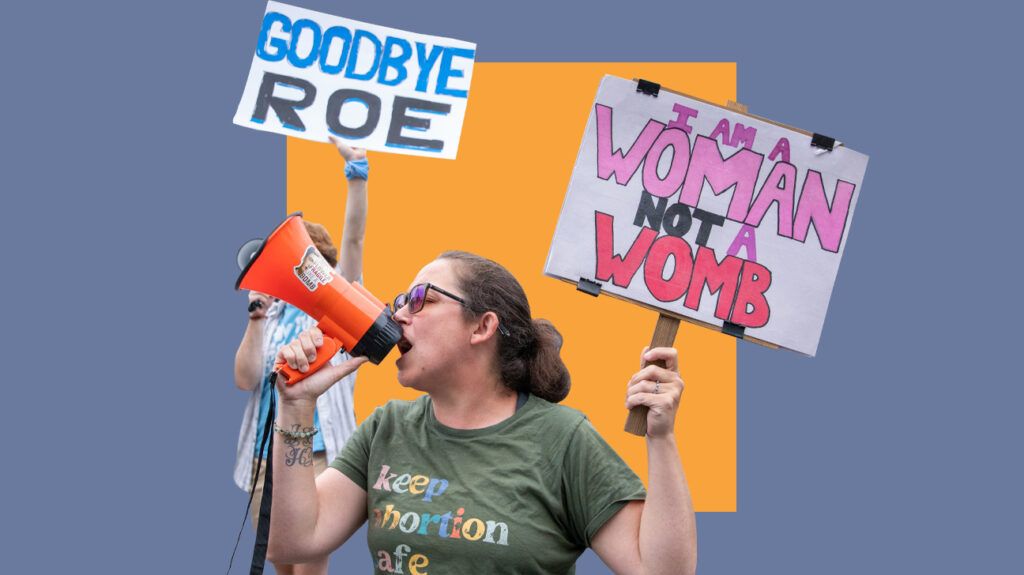
- The United States Supreme Court ruled Friday, June 24, to overturn Roe v. Wade, eliminating Americans’ constitutional right to abortion.
- Roe v. Wade was decided in 1973 and guaranteed a right to abortion until a fetus was viable.
- In the case of Dobbs v. Jackson Women’s Health Organization, the Supreme Court evaluated the constitutionality of Mississippi’s 15-week abortion ban.
- Mississippi had asked the Court to overrule Roe to uphold the 15-week ban.
The United States Supreme Court has voted to overturn Roe v. Wade — the landmark ruling that has protected pregnant people’s right to get an abortion before fetal viability since 1973.
In the case of Dobbs v. Jackson Women’s Health Organization, the Court has been evaluating the constitutionality of Mississippi’s 15-week abortion ban.
Mississippi’s ban has been blocked since 2018 when an appeals court ruled that the ban places an undue burden on pregnant people seeking an abortion.
Mississippi had asked the Court to overrule Roe to uphold the 15-week ban.
In May, Politico published a leaked draft opinion crafted by Justice Samuel Alito, hinting that the Court — which has a 6-3 conservative majority — was prepared to take down Roe.
The Court confirmed Friday that it would be overturning Roe in their ruling on Dobbs.
Without Roe’s protections, individual states will regulate abortion and decide if and when a person can get an abortion.
Twenty-six states will partially or fully ban abortions without Roe, according to the Guttmacher Institute, a New York-based organization committed to advancing sexual and reproductive health and rights.
If all 26 states restrict or ban abortion, that will affect more than 36 million women — in addition to all of the other people who can become pregnant — who may lose the right to an abortion in their state.
Thirteen of these states have trigger bans designed to go into effect when Roe is overturned, and nine states have bans in place from before Roe that may immediately go back into effect.
Five states have abortion bans that were enacted after Roe, 11 states have six-week bans that are not yet in effect due to protections from Roe and one state, Texas, has a six-week ban that’s already in effect.
Ohio is expected to be one of the first states to pass a total abortion ban. Republican Gov. Mike DeWine has said he will reverse a block against a six-week abortion ban when the Supreme Court overturns Roe v. Wade.
Florida, Indiana, Montana and Nebraska are also expected to ban abortion quickly.
Sixteen states and the District of Columbia have laws protecting the right to abortion.
New York, Pennsylvania, Virginia, North Carolina, Illinois, Minnesota, Kansas, Colorado, New Mexico, Nevada, Washington, Oregon and California are unlikely to ban abortion and would have the nearest provider for people from states where abortions will be banned.
Without federal protections, pregnant people living in states banning abortion will have to travel hundreds, if not thousands, of miles to get abortion care.
Clinics in states that continue to conduct abortions are preparing to meet an influx of pregnant people traveling out of state for care.
The overflow of patients means many clinics will have longer wait times.
Many people who can not afford to travel for abortion care will be forced to carry the pregnancy to term.
Research has previously shown that when pregnant people are denied an abortion they are more likely to experience financial difficulties, mental health issues and physical health problems.
The consequences are most pronounced in Black, Latino and Indigenous communities.
Past evidence has found that abortion restrictions
The United States Supreme Court has voted to overturn Roe v. Wade — the landmark ruling that has protected pregnant people’s right to get an abortion before fetal viability. Without Roe, individual states will decide if and when pregnant people can get an abortion. Twenty-six states are set to quickly ban or restrict abortions, and an estimated 36 million women may lose the right to abortion in their state.
